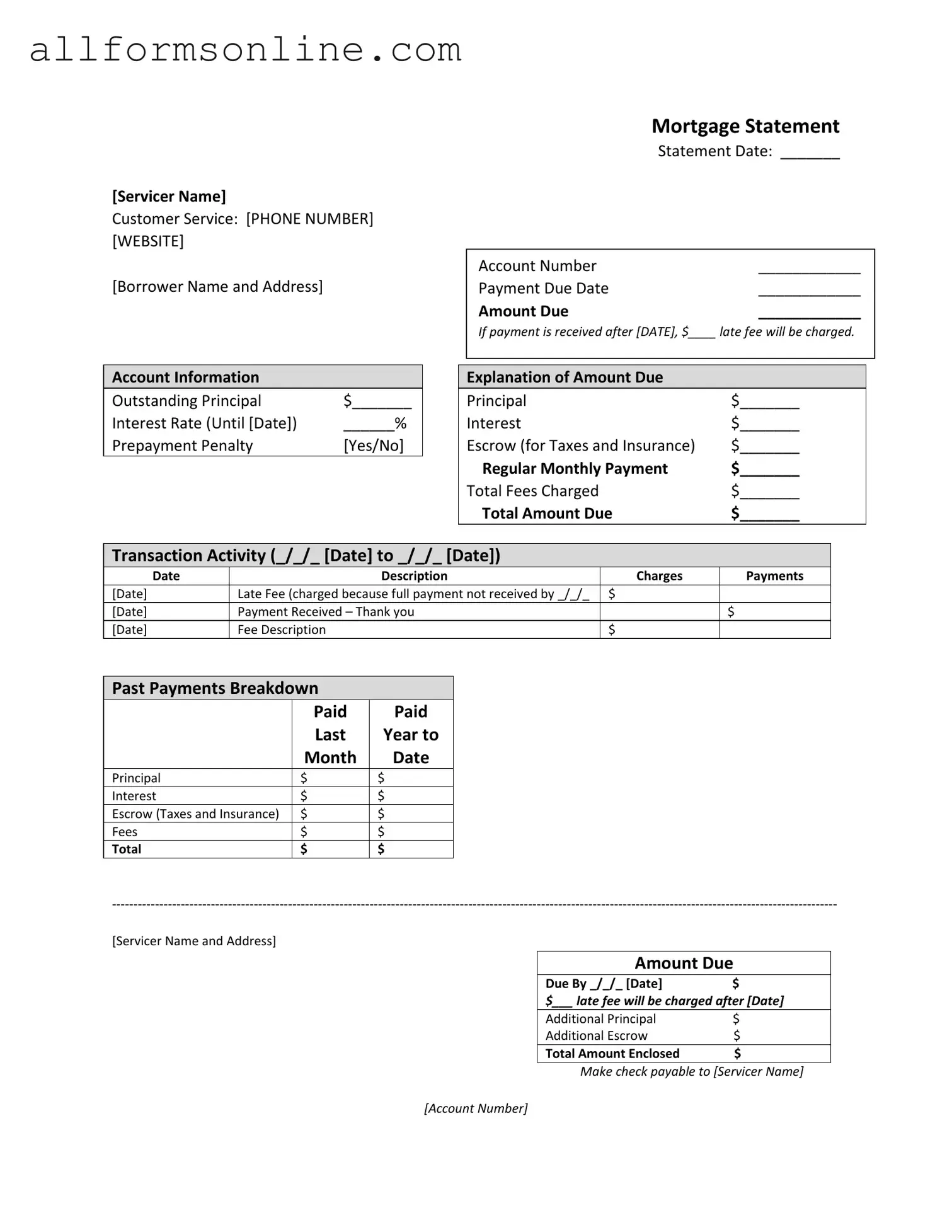What is a Mortgage Statement?
A Mortgage Statement is a document that provides a detailed summary of your mortgage account. It includes information such as your outstanding principal balance, interest rate, payment due date, and the total amount due. This statement also outlines any fees charged and provides a breakdown of your recent payment history. It's essential for keeping track of your mortgage payments and understanding your financial obligations.
What should I do if I see an error on my Mortgage Statement?
If you notice an error on your Mortgage Statement, contact your loan servicer immediately. Use the customer service phone number or website listed on the statement. Be prepared to provide details about the error, such as the specific amount or transaction in question. The servicer will investigate the issue and provide you with a resolution. It's important to address errors promptly to avoid complications with your account.
What happens if I miss a payment?
Missing a payment can lead to serious consequences. If your payment is not received by the due date, you may incur a late fee, as indicated on your Mortgage Statement. Continued missed payments can result in your account becoming delinquent, which may lead to foreclosure. It's crucial to communicate with your servicer if you are experiencing financial difficulties, as they may offer options for assistance or mortgage counseling.
How can I make a payment on my mortgage?
You can typically make a payment on your mortgage through several methods. Most servicers allow online payments via their website. You can also make payments by mail, using the address provided on your Mortgage Statement. If you prefer, you may be able to set up automatic payments to ensure your mortgage is paid on time each month. Always confirm the payment method and details with your servicer to avoid any issues.
